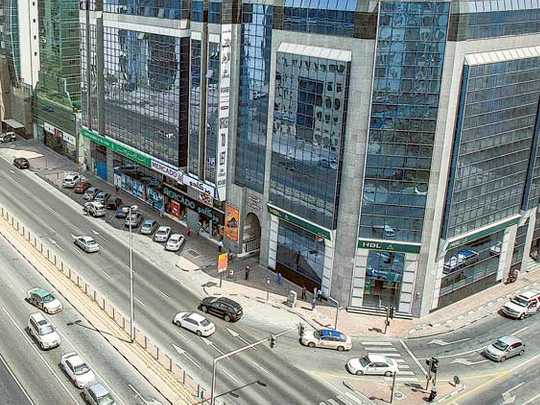
Dubai: Loan growth in the UAE’s banking sector is picking up pace helped by the positive economic growth, improving consumer confidence and declining risk aversion and non-performing loans.
According to the The Banker’s “Top 1000 World Banks 2013” report, the UAE banking sector’s net assets have risen more than ten-fold from $49 billion (Dh180 billion) in 1995 to $509 billion in mid-2013. The UAE banking sector directly employs more than 34,400 staff as of mid-2013, more than doubling since 2000.
Financial results of the UAE banks for the first nine months of 2013 show, most banks stopped the sharp deleveraging that followed the financial crisis and the loan growth has started picking up momentum.
Large banks have reported high single digit growth in the first nine months of the year. While Emirates NBD’s customer loans as at September 30, 2013 (including Islamic financing) amounted to Dh234.4 billion, an increase of 7 per cent from the end of 2012 National Bank of Abu Dhabi’s (NBAD) loans increased 5.2 per cent to Dh182.5 billion. NBAD’s total assets in January-September period increased 14.8 per cent to Dh345.1 billion while loans increased 10.9 per cent in the same period.
“A difficult period of balance sheet repair has been completed. Banks went through a period of deleveraging and provisioning. With stronger balance sheet and sufficient liquidity in the system, the UAE’s banks are ready to increase lending,” said George T Abed, senior counsellor and director for Africa and Middle East of Institute of International Finance (IIF).
Confidence
A number of smaller banks too have reported double digit loan growth on an annualised basis. While First Gulf Bank’s loans and advances grew at a year-to-date growth of 10.7 per cent for the first 9 months of the year, Commercial Bank of Dubai reported a loan growth of 11.9 per cent.
“The banking industry is safe and secure in the UAE and the overall confidence in the UAE banks is justifiably strong,” the Governor of the UAE Central Bank, Sultan Nasser Al Suwaidi, said earlier this month.
A decline in the rate of growth of non-performing loans combined with improved liquidity and surge in lending has helped most UAE banks to improve their profitability this year.
“The banks here received strong sovereign support, which helped them to remain highly liquid during the crisis years. While capital levels remained exceptionally high during the period, improving economic activity has helped the asset quality,” said Timucin Engin, Associate Director, Ratings Analytical Financial Institutions at Standard & Poor’s.
Credit rating agency Moody’s Investors Service recently upgraded the outlook for the UAE’s banking sector to stable from negative. The outlook change reflects the continued improvements in the operating environment, as well as the ongoing recovery of the local real-estate market, which Moody’s believes will lead to a decline in non-performing loan levels and an increase in profitability over the next 12 to 18 months.
Restructurings
Moody’s expects declines in the problem loans to gross loans ratio to 8 to 9 per cent range over the outlook period, from a 10.5 per cent average at year-end 2012. While the ongoing real estate market recovery and more cautious underwriting during the downturn period are expected to lead to lower new problem loan formation. Asset quality metrics are also be supported by a reduction in the stock of problem loans due to the increasing volume of settlements, recoveries and commercial restructurings.
Rating agencies expect that the increase in net income will provide UAE banks with the internal capital generation capacity necessary to support asset growth over the outlook period, whilst maintaining their strong Tier 1 capital levels, which stood at around 16 per cent as of June 2013.
“In addition to the shock-absorption capacity provided by robust capital metrics, we also anticipate that the banking system will maintain its strong funding and liquidity profile. The cash-rich federal government and stronger Abu Dhabi-based government related entities will continue to remain a key and stable source of deposits, limiting the system’s dependence on confidence-sensitive market funding.” said Khalid Howladar Vice President — Senior Credit Officer at Moody’s
Despite the upgraded outlook, Moody’s warns that exposures to large corporate restructurings and government-related issuers (GRIs) will continue to pose asset-quality risks, particularly for Dubai-based banks.











